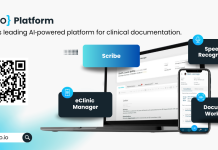Howard Sherrington, Director of Transformation Strategy at Zscaler, explains why digital transformation must look holistically at change
Change is inevitable, yet the way we deal with change has a considerable impact on how we feel about it and how seamless, or otherwise, the transition is. For organisations undergoing large-scale digital transformations, the impact is manifold. However, with preparation, planning, and—most critical—flexibility, outcomes can meet or exceed transformation objectives.
Businesses must adapt to remain competitive in continually evolving conditions. Legacy infrastructure may hinder progress and, over time, prove difficult to maintain and secure. For this reason, most businesses are somewhere along the journey of a digital transformation.
A change programme is unlikely to be a one-off task but rather a continuous progression made up of interdependent changes. What is paramount is to be clear on the vision and strategy. If implementation hangs on everything being perfectly in place, technology and the business will have moved on before any change takes place. Provided the IT strategy is clear and links back to the overall business vision, the route to successful change can be a flexible, iterative process, with incremental progress made along the way.
To succeed, change must be considered in context and encompass aspects of people, process, and technology. Without everyone driving and responding to the change, the business benefit won’t be fully realised. Employees will be called upon to adapt, but also to maintain the business throughout any transition. If they are not effectively engaged with the change team, the transformation will be negatively impacted.
Digital transformation must, therefore, look holistically at change and its impact, taking into consideration:
The business vision
Digital transformations deliver technical outcomes, but their purpose is more far-reaching and must start from the business strategy. How the programme’s priorities align with the business vision must be clearly understood and articulated. A digital transformation should equip the business to better deliver on its objectives through a modern and efficient technology architecture. Still, if it doesn’t also advance the business strategy, you must question why it is being done.
The mindset shift
A digital transformation is likely to involve a mindset shift. Which embedded processes and workflows need to evolve to successfully deliver the change? How should this be communicated to teams and how can you assist them to adapt? Acknowledging that a shift may cause consternation will be the first step along the way to addressing those concerns and formulating the reasons for, and benefits of, change.
Buy-in
The C-suite must understand how the change delivers their vision, so that they can articulate it to their stakeholders. Their endorsement of the change strategy allows you to assemble an empowered team to drive the change. With C-suite support a change leader can be the fulcrum of the programme, providing the focal point for information exchange, decision making, and escalations.
Interdependencies
It’s unlikely that digital transformation will exist in a change vacuum. At this stage, it is important to identify and establish links with other interdependent strategies and programmes within the business. Some deliverables are likely to be dependent on others and hold-ups in one area could impact another. Ultimately, this change initiative must be part of the bigger tapestry of what the company is doing and where it is going.
Communication
Communication should be viewed as an ongoing activity. It must be two-way, frequent, and with a consistent dialogue with technical and non-technical communities, partners, vendors, and stakeholders. It must start with a clear strategy, ownership and accountability and should include a process for responding to valid questions and concerns.
There will inevitably be some users who feel resentful of a change, particularly when it alters very familiar ways of working. By accepting there will be some negativity and resistance, and having a strategy to deal with that, change leaders can more productively address concerns. If change is inadequately communicated, it will affect how people feel about it and, ultimately, lead to a longer drawn-out transition.
Engaging Partners
Successful change is seldom a solo effort, so foster strong and collaborative relationship with all stakeholders in the programme. When working with solutions and service providers, acknowledge their strengths and lean on those teams for guidance and support. Once they are fully onboard with what the transformation objectives and implementation approach, draw on the full breadth of experience within the wider team to optimise outcomes.
Iteration
A flexible approach, one that delivers a minimum viable product and iterates to improve it, is the best way to meet new requirements and challenges and evolve with business needs. It allows a business to start towards their transformation and get early value from an investment. Moreover, by migrating to new platforms, technologies, and processes in stages, issues can be raised and addressed early on. This also allows prioritisation of certain parts of the business. For example, there may be quick wins or easy departments to migrate with little disruption. This allows the change team to focus their efforts on a smaller proportion of niche or problematic migrations.
Post-implementation review
This is very important for improving future projects, programme delivery, and to setting the tone for continuous improvement. For the review to be successful though, it must be independent, thorough, and honest.
The agility and efficiency envisaged from digital transformation can be maximised with a rounded approach to change. Successful change builds operational resilience, improves decision-making, and fosters willingness to engage with and accept change. Productivity, security, improved job satisfaction, and greater flexibility should result, as well as progress towards the overall business strategy. To ensure this is the case, the cultural, process and operational aspects of a digital transformation must be tackled through an empowered change programme.











